Looking for the best hydrangea companion plants? You’re in the right place. Learn what you can plant next to hydrangeas and what you should not plant near hydrangeas. Get ideas about which vegetables grow well with hydrangeas, which flowers grow well with hydrangeas, which herbs grow well with hydrangeas, and which fruit grows well with hydrangeas. It’s all here, along with tips about the best place to plant hydrangeas, the best fertilizer for hydrangeas, and whether hydrangeas need a lot of water. I’ve been growing hydrangeas for over 20 years, and it’s one of the most easy-care, reliable shrubs in our garden. If you are looking for a low-maintenance, summer-blooming, beautiful addition to your collection of favorite shrubs, read on to learn how simple it is to grow stunning hydrangeas.
Table of Contents
My Hydrangea Backstory
As a child, I paid many visits to my grandparents’ house in Vancouver, B.C. My grandfather made the most of his urban yard, and grew some thriving hydrangeas. They flourished in the partially shaded side yard of their city dwelling. Fast forward a couple of decades, and as a classroom teacher in western Oregon’s garden zone 8, I received a beautiful hydrangea plant from one of my students. One plant led to another, and now hydrangeas play a valuable role in the landscape of our backyard and side yard. Hydrangeas make a fabulous party theme, whether you are celebrating a baby shower, bridal shower, tea party or wedding. Hydrangeas are attractive on party invitations. If hydrangeas are part of your landscape plans and you are asking yourself, “What can I plant next to hydrangeas?” read on!
Where is the Best Place to Plant Hydrangeas?
Before you learn about the best companion plants for hydrangeas, it is important to decide upon the best location to place your hydrangeas in your yard. Here are the essential factors to consider when you are choosing the placement of your hydrangea plant:
Morning Sun, Afternoon Shade: Hydrangeas adore the morning sun but appreciate shade during the hottest part of the day. Plant them where they’ll receive a few hours of direct sunlight in the morning, followed by gentle shade in the afternoon.
Well-Drained Soil: Choose a spot with soil that drains well to prevent waterlogging and root rot. Hydrangeas prefer moist but not waterlogged soil, so good drainage is essential.
Sheltered from Strong Winds: Protect your hydrangeas from strong winds that can damage their delicate blooms and foliage. Plant them in a location shielded by a fence, wall, or other structures.
Fertile Soil with Organic Matter: Hydrangeas thrive in fertile soil enriched with organic matter. Incorporate compost or well-rotted manure into the planting area to provide essential nutrients.
Avoid Hot, Dry Areas: Hydrangeas prefer cool and moist conditions, so avoid planting them in extremely hot and dry areas.
When is the Best Time to Plant Hydrangeas?
The best time to plant hydrangeas can vary slightly depending on the specific type of hydrangea and the climate in your region. In general, the ideal time to plant hydrangeas is during the early spring or the fall.
Spring planting: Planting hydrangeas in early spring, just after the last frost date, allows the plant to establish its root system before the heat of summer arrives. This gives the plant a better chance of surviving and thriving during the hotter months. Aim to plant them in the early morning or late afternoon to avoid stressing the plant with intense midday sun.
Fall planting: Fall is also an excellent time to plant hydrangeas, typically in the late summer or early fall when temperatures start to cool down. Planting in the fall allows the hydrangeas to focus on root growth during the cooler months, preparing them for vigorous growth and blooming in the following spring and summer.
Avoid planting hydrangeas during the hottest months of summer or the coldest months of winter, as extreme temperatures can stress the plants and make it more challenging for them to establish a strong root system.
Keep in mind that if you’re planting container-grown hydrangeas, they can be planted throughout the growing season, but it’s still best to avoid extreme weather conditions. Also, ensure the hydrangeas receive adequate water during their establishment period, regardless of the time of year you plant them. This will help them settle into their new location and promote healthy growth.
Which Flowers Grow Well with Hydrangeas?
Wondering what to plant next to hydrangeas in a flower garden? What flowers go well with hydrangeas? Any of the following flowers would make excellent hydrangea companions:
Delphiniums: These tall, majestic flowers with their vibrant blue, purple, or pink spikes make a stunning backdrop for hydrangeas, creating a beautiful contrast.
Echinaceas (Coneflowers): Available in various colors, echinaceas’ bold and daisy-like blooms add a touch of whimsy and attract pollinators, making them excellent companions for hydrangeas.
Rudbeckias (Black-Eyed Susans): With their bright yellow petals and dark centers, rudbeckias bring a sunny, cheerful vibe to hydrangea gardens and attract butterflies too.
Salvia: The vibrant spires of salvia in shades of blue, purple, or red provide a striking contrast against hydrangea blooms, making them eye-catching partners.
Campanulas (Bellflowers): These delicate, bell-shaped flowers in shades of blue, purple, or white complement the softness of hydrangea clusters, lending an air of elegance.
Which Fruit Grows Well with Hydrangeas?
What grows well with hydrangeas in an orchard setting? Fruit trees, shrubs, and vines may be part of a garden landscape as well. Here are some fruit-bearing plants that would complement hydrangeas well:
Raspberries: The sprawling habit of raspberry canes fills in the spaces between hydrangeas, while their delicious fruits offer a tasty reward. Raspberries generally prefer full sun, while hydrangeas can tolerate some shade. Make sure to find a location that provides the right balance of sunlight for both plants.
Blueberries: Blueberries and hydrangeas both prefer acidic soil conditions. Both plants thrive in soil with a lower pH, typically between 4.5 and 6.0. This means they can be grown in close proximity or even in the same garden bed.
Currants: With their vibrant clusters of red, black, or white berries, currant bushes provide visual interest and a flavorful harvest alongside hydrangeas.
Gooseberries: These tangy fruits thrive in similar conditions as hydrangeas and can be grown as attractive shrubs, enhancing the overall appeal of your garden.
Elderberries: Elderberry bushes offer both ornamental value and edible berries, creating a fruitful and visually appealing partnership with hydrangeas.
Kiwi Vines: The vigorous growth and lush foliage of kiwi vines create a verdant backdrop for hydrangeas, while their sweet and tart fruits add a unique touch.
Which Herbs Grow Well with Hydrangeas?
Fragrant herbs can be aesthetically pleasing companions for hydrangeas in a garden landscape design. What goes well with hydrangeas in an herb garden? Here are some popular favorites:
Rosemary: The aromatic foliage and delicate blue flowers of rosemary complement hydrangeas beautifully, adding a touch of fragrance and attracting pollinators.
Sage: With its textured leaves and vibrant flowers in shades of purple or blue, sage provides visual interest while enhancing the pollinator-friendly environment.
Lemon Balm: The lemony fragrance and bright green leaves of lemon balm offer a refreshing backdrop to hydrangeas, creating a sensory delight in your garden.
Oregano: This hardy herb forms attractive mounds of foliage and small, delicate flowers, bringing a charming presence to your hydrangea beds.
Chives: The slender, onion-like leaves and delicate purple flowers of chives add a pop of color and a mild onion flavor, making them a delightful addition to hydrangea borders.
Which Vegetables Grow Well with Hydrangeas?
If you have a small garden space, you may need to intersperse your vegetables with your ornamental plants. Wondering what to plant with hydrangeas in a vegetable garden area? Here are some vegetables that would do well when planted near hydrangeas:
Swiss Chard: The colorful stems and vibrant foliage of Swiss chard make it a striking choice for companion planting with hydrangeas, adding a dash of edible beauty.
Bush Beans: Compact and productive, bush beans fit well between hydrangeas, utilizing space effectively while providing a bountiful harvest.
Carrots: Hydrangeas’ partial shade is ideal for growing carrots, ensuring they don’t overheat and promoting even root development.
Lettuce: The dappled shade provided by hydrangea clusters creates an excellent microclimate for growing lettuce, keeping it crisp and delicious.
Cucumbers: By training cucumbers vertically, you can take advantage of the space beneath hydrangeas, allowing these vining vegetables to thrive and bear plentiful fruits.
Which Shrubs Grow Well with Hydrangeas?
What shrubs go well with hydrangeas? Create a stunning color palette in your garden with these flowering shrubs that provide beautiful contrasting blooms that would pair well with the shades of hydrangea blossoms:
Weigela: With their trumpet-shaped flowers in shades of pink, red, or white, weigelas offer a vibrant display that harmonizes beautifully with hydrangea blooms.
Viburnums: These versatile shrubs provide an array of stunning flowers and berries, contributing to the overall aesthetics and biodiversity of your hydrangea garden.
Spireas: Compact and elegant, spireas produce cascading clusters of white, pink, or red flowers that create a visually captivating contrast with hydrangeas.
Potentillas: Known for their long-lasting blooms in vibrant colors, potentillas bring a cheerful touch to hydrangea beds, enhancing their overall appeal.
Lilacs: The intoxicating fragrance and stunning blossoms of lilacs perfectly complement hydrangeas, creating a captivating sensory experience in your garden. One of our hydrangeas does quite well with a lilac as its neighbor.
What Shade Plants Go with Hydrangeas?
When selecting shade plants to accompany hydrangeas, it’s essential to choose plants that thrive in similar light and soil conditions. Here are some shade-loving plants that can complement hydrangeas:
Hostas: Hostas are popular shade-loving perennials with attractive foliage in a range of colors, including green, blue, and variegated varieties. They come in various sizes and leaf shapes, providing texture and visual interest near hydrangeas. Planting hostas and hydrangeas together is a popular combination. Both types of plants thrive in part-shade to shady conditions, and both kinds of plants do well in soil that is slightly acidic.
Here are some tips for how to plant hostas and hydrangeas together:
Space the hostas around the base of a hydrangea, far enough so that the branches of the hydrangea do not cover the hosta completely. Choose two or three hosta plants for each hydrangea, and space the plants far enough from any building so the plants have room to spread.
There are many other shade-loving plants that go well with hydrangeas, and here are some of them:
Ferns: Ferns thrive in shade and add a lush, feathery texture to the garden. Choose varieties like Japanese painted ferns (Athyrium niponicum) or lady ferns (Athyrium filix-femina) to create a graceful backdrop for hydrangeas.
Heuchera: Heuchera, also known as coral bells, offers a wide array of foliage colors, ranging from deep burgundy to lime green and variegated options. Their compact growth habit and delicate flowers make them an excellent choice for pairing with hydrangeas.
Astilbe: Astilbe produces feathery plumes of flowers in shades of pink, red, white, and lavender. Their vibrant blooms and attractive foliage provide a beautiful contrast to hydrangeas and add a pop of color to shady areas.
Hellebores: Hellebores, also known as Lenten roses, are shade-loving perennials that bloom in late winter or early spring. Their elegant, downward-facing flowers in various colors, including white, pink, and purple, can complement the blooms of hydrangeas.
Bleeding Hearts (Dicentra): Bleeding hearts feature heart-shaped flowers that dangle from arching stems. These delicate, shade-loving perennials come in shades of pink and white and can provide a charming accent near hydrangeas.
Foamflower (Tiarella): Foamflower is a low-growing perennial that produces clusters of dainty, star-shaped flowers in shades of white and pink. Their attractive foliage, resembling foam or lace, adds texture and interest to shade gardens.
Japanese Forest Grass (Hakonechloa): Japanese Forest Grass is a beautiful ornamental grass that thrives in shade. It forms cascading mounds of arching, colorful foliage, creating a soft and flowing effect around hydrangeas.
What Should You Not Plant Near Hydrangeas?
To ensure the optimal growth and health of your hydrangeas, here is what not to plant with hydrangeas:
Evergreen Trees: Dense foliage from evergreen trees can create excessive shade, limiting sunlight exposure for hydrangeas.
Rhododendrons and Azaleas: These shrubs have similar soil and moisture requirements as hydrangeas, which can lead to competition for resources and hinder growth. In our garden, we have rhododendrons and azaleas in the same general area, but not right next to our hydrangeas.
Quick Hydrangea Companion Plant Reference Chart
| Best Hydrangea Companion Plants | |
| Hydrangea Companion Plants: Flowers | Hydrangea Companion Plants: Fruit |
| Campanulas (Bellflowers) | Blueberries |
| Delphiniums | Currants |
| Echinaceas (Coneflowers) | Elderberries |
| Rudbeckias (Black-Eyed Susans) | Gooseberries |
| Salvia | Kiwi Vine |
| Raspberries | |
| Hydrangea Companion Plants: Herbs | Hydrangea Companion Plants: Vegetables |
| Chives | Bush beans |
| Lemon Balm | Carrots |
| Oregano | Cucumbers |
| Rosemary | Lettuce |
| Sage | Swiss Chard |
| Hydrangea Companion Plants: Shrubs | Worst Hydrangea Companion Plants |
| Lilacs | Azaleas |
| Potentillas | Evergreen Trees |
| Spireas | Rhododendrons |
| Viburnums | |
| Weigela | |
Common Questions About Hydrangea Care
Does cutting hydrangeas promote more flowers?
The effect of cutting hydrangeas on promoting more flowers depends on the specific type of hydrangea and the timing of the pruning. Here’s a breakdown of the different hydrangea varieties and their response to pruning:
Bigleaf Hydrangeas (Hydrangea macrophylla): Bigleaf hydrangeas, including mophead and lacecap varieties, bloom on old wood. This means that they produce flower buds on the previous year’s growth. If you prune them at the wrong time or too heavily, you risk removing the flower buds and reducing the number of blooms. Therefore, it’s generally recommended to prune bigleaf hydrangeas immediately after flowering, if needed, to avoid interfering with the next season’s blooms.
Panicle Hydrangeas (Hydrangea paniculata): Panicle hydrangeas, such as the popular ‘PeeGee’ hydrangea, bloom on new wood. They produce flower buds on the current season’s growth, so pruning them in late winter or early spring before new growth begins does not negatively impact flowering. In fact, light pruning or selective removal of old stems can promote more compact growth and larger flower clusters.
Smooth Hydrangeas (Hydrangea arborescens): Smooth hydrangeas, like the ‘Annabelle’ variety, also bloom on new wood. They develop flower buds on the current season’s growth, making them more responsive to pruning. Pruning smooth hydrangeas in late winter or early spring can encourage fuller growth and result in larger flower heads.
Oakleaf Hydrangeas (Hydrangea quercifolia): Oakleaf hydrangeas have distinctive foliage resembling oak leaves and produce cone-shaped flower clusters. They generally bloom on old wood, so pruning should be done after flowering to avoid removing potential blooms.
If you have hydrangeas that bloom on old wood (bigleaf and oakleaf hydrangeas), it’s best to prune them immediately after flowering or avoid heavy pruning altogether to ensure the preservation of flower buds. On the other hand, hydrangeas that bloom on new wood (panicle and smooth hydrangeas) can be pruned in late winter or early spring to encourage fuller growth and potentially larger blooms.
How do you keep hydrangeas the same color?
Keeping hydrangeas the same color can be a bit challenging, as the flower color of hydrangeas can be influenced by various factors, including soil pH, availability of aluminum, and the specific variety of hydrangea. Here are a few methods you can try to maintain consistent hydrangea colors:
Soil pH Management:
Blue Hydrangeas: To promote or intensify blue coloration, you need acidic soil with a pH range of around 5.0 to 5.5. Lowering the soil pH can be achieved by applying amendments like aluminum sulfate or elemental sulfur to the soil. It’s important to note that this method works for blue-flowering cultivars of bigleaf hydrangeas (Hydrangea macrophylla) and not all hydrangea varieties.
Pink or Red Hydrangeas: These colors are enhanced by more alkaline soil with a pH range of around 6.0 to 6.5. Applying lime to the soil can help increase the pH and encourage pink or red blooms.
Aluminum Availability:
Blue Hydrangeas: Aluminum availability is crucial for blue coloration. In acidic soil, aluminum becomes more soluble and can be taken up by the hydrangea plant, resulting in blue blooms. To ensure aluminum availability, maintain acidic soil conditions and avoid adding amendments that may reduce aluminum availability, such as lime.
Consistent Soil Conditions:
Once you have achieved the desired soil pH for your preferred hydrangea color, it’s important to maintain consistent soil conditions. Monitor the pH regularly and make any necessary adjustments to keep it within the appropriate range for your desired hydrangea color.
Variety Selection:
If you want to ensure consistent color, consider selecting hydrangea varieties that are known for producing flowers in the specific color you prefer. Some varieties have more stable flower colors, regardless of soil conditions or pH.
Remember that some hydrangea varieties have the ability to change colors naturally, especially those classified as “mophead” or “lacecap” hydrangeas (Hydrangea macrophylla). The ability to maintain consistent colors can also depend on the environmental conditions in your specific location.
It’s important to note that changing the color of already established hydrangeas can take time, as it involves gradually adjusting the soil conditions and allowing the plant to uptake the necessary elements. It may take several seasons for noticeable changes to occur.
Can you plant two hydrangeas together?
Yes, you can plant two hydrangeas together. In fact, planting multiple hydrangeas close to each other can create a beautiful and impactful display in your garden. The Hydrangea Ranch outside of Tillamook, Oregon offers an excellent example of the stunning display on view when the rows of hydrangeas are in bloom. If you would like to plant multiple hydrangeas near each other, here are a few things to keep in mind:
Spacing: Hydrangeas need adequate space to grow and develop their full size. When planting multiple hydrangeas, make sure to space them according to the specific variety’s recommended spacing guidelines. This allows each plant to receive enough sunlight, air circulation, and access to nutrients without crowding each other.
Soil and Sunlight Requirements: Ensure that the planting area provides suitable conditions for the hydrangea varieties you plan to plant. Hydrangeas generally prefer well-draining soil and partial shade, although specific cultivars may have varying preferences. Make sure the soil pH is appropriate for the type of hydrangea you are planting.
Design Considerations: Consider the overall design and aesthetic you want to achieve when planting multiple hydrangeas. You can choose hydrangea varieties with different bloom colors or forms to create contrast and visual interest. Additionally, consider how the heights and growth habits of different hydrangea varieties will work together to create a harmonious and balanced composition.
Watering and Maintenance: Proper watering is important for hydrangeas, especially during the establishment phase. Ensure that each hydrangea receives sufficient water based on its specific needs. Additionally, regular maintenance tasks such as pruning, deadheading, and fertilizing should be carried out on each plant individually to promote healthy growth and blooming.
On what side of the house do you plant hydrangeas?
Hydrangeas generally prefer locations with partial shade to full sun, depending on the variety. When considering which side of the house to plant hydrangeas, it’s essential to assess the specific lighting conditions and microclimates of your property. Here are some general guidelines:
Partial Shade: If your house has areas that receive partial shade, such as the east or north side, these can be suitable locations for planting hydrangeas. They’ll benefit from morning sun and afternoon shade, which helps prevent the flowers from wilting in hot weather.
Full Sun: Some hydrangea varieties, such as the panicle hydrangea (Hydrangea paniculata) and the smooth hydrangea (Hydrangea arborescens), tolerate full sun well. In this case, you can plant them on the south or west side of your house, where they’ll receive ample sunlight throughout the day.
Consider Microclimates: Pay attention to factors like nearby trees or structures that may cast shadows or block sunlight. Additionally, assess the soil moisture and drainage in the area you’re considering for planting, as hydrangeas prefer moist, well-drained soil.
Protection from Harsh Conditions: Avoid planting hydrangeas in locations where they may be exposed to strong winds or extreme temperatures, as these can damage the plants and hinder their growth.
Ultimately, the best location for planting hydrangeas on the side of your house will depend on the specific lighting and environmental conditions of your property, as well as the preferences of the hydrangea variety you choose.

Using Hydrangeas for Decorating
Hydrangeas can be used in many ways. As a decorating theme in home decor, they may be used fresh or dried. For celebrations, like weddings, baby showers, bridal showers, and tea parties, the large size of hydrangea blooms makes decorating easy. You can get hydrangea party supplies to go with a hydrangea party theme.
Hydrangeas were used beautifully in a wedding I attended, as you can see in the photo below. There are many possibilities when using hydrangeas as a theme for a gathering, and the plants that go well with hydrangeas often add nice decorative touches, too. You can keep all of your planning ideas organized in a hydrangea-themed bag.
Need More Planting Ideas?
Now that you have learned what to plant with hydrangeas, you might enjoy some other plant combination ideas. Check out the tips for the best companion plants for eggplant to learn what to grow with those beauties. If you like the idea of companion planting, you might be interested in reading about the best companion plants for pumpkins, lavender, sunflowers, rhubarb, blueberries, or rosemary. Get tips for growing stunning dahlias. Are you a beginning gardener? Try planting some foolproof, easy-care perennials, or learning about the best companion plants for columbine. There are so many exciting plants to grow!
Keep Track of Your Garden with a Journal Logbook
Now that you have learned about some compatible companion plants, keep track of your planting ideas, goals, and plans with a free garden journal logbook. Choose the pages you want to print and customize them as you wish to record monthly, weekly, and daily garden tasks, lists, weather, and planting arrangements. There are also grid pages for easily designing the layout of your vegetable garden, flower garden, or landscape. Print it out and put it into a notebook you can take with you to the garden (that’s what I do). It’s nice to have all of your garden information in one place.
Free Online Garden Planner Layout Template
Now that you know which are the best companion plants for hydrangeas, you might need a way to plan your garden layout. Whether you are planting vegetables, flowers, or herbs near your hydrangea plant, this online garden planner can help you visualize your design and bring it to life. With garden tasks that need your attention, this is one way to save time.
It’s fully customizable when you make your own copy and includes two editable chart pages for noting planting specifications.
Get my free online garden layout planner template!
Organize Your Garden Tasks with a Free Garden Planner Notebook
As a result of needing to keep track of garden tasks throughout the year, I decided to begin a garden planner notebook. It has a page for each month, along with notes pages. If a garden planner notebook seems like a good idea to you, good news! You can get it here!
Get the garden notebook!
Have a wonderful week, and may all of your hydrangea-growing endeavors meet with success!
Lisa Mitchell is a wife, mom, and school librarian who likes to grow fruit, vegetables, and flowers on her family’s small Pacific Northwest farm. To learn more about what this website has to offer gardeners, click on over to the Garden page.
Like what you read here? Please give it a share!
Want more great garden, food, or travel ideas? Follow FluxingWell on Pinterest, Facebook, Instagram, and X for the latest posts, tips, and inspiration.

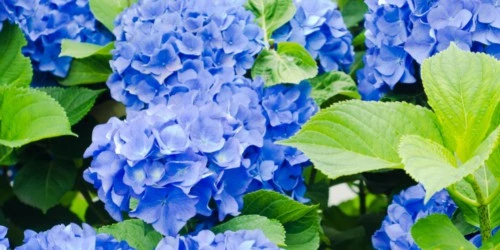
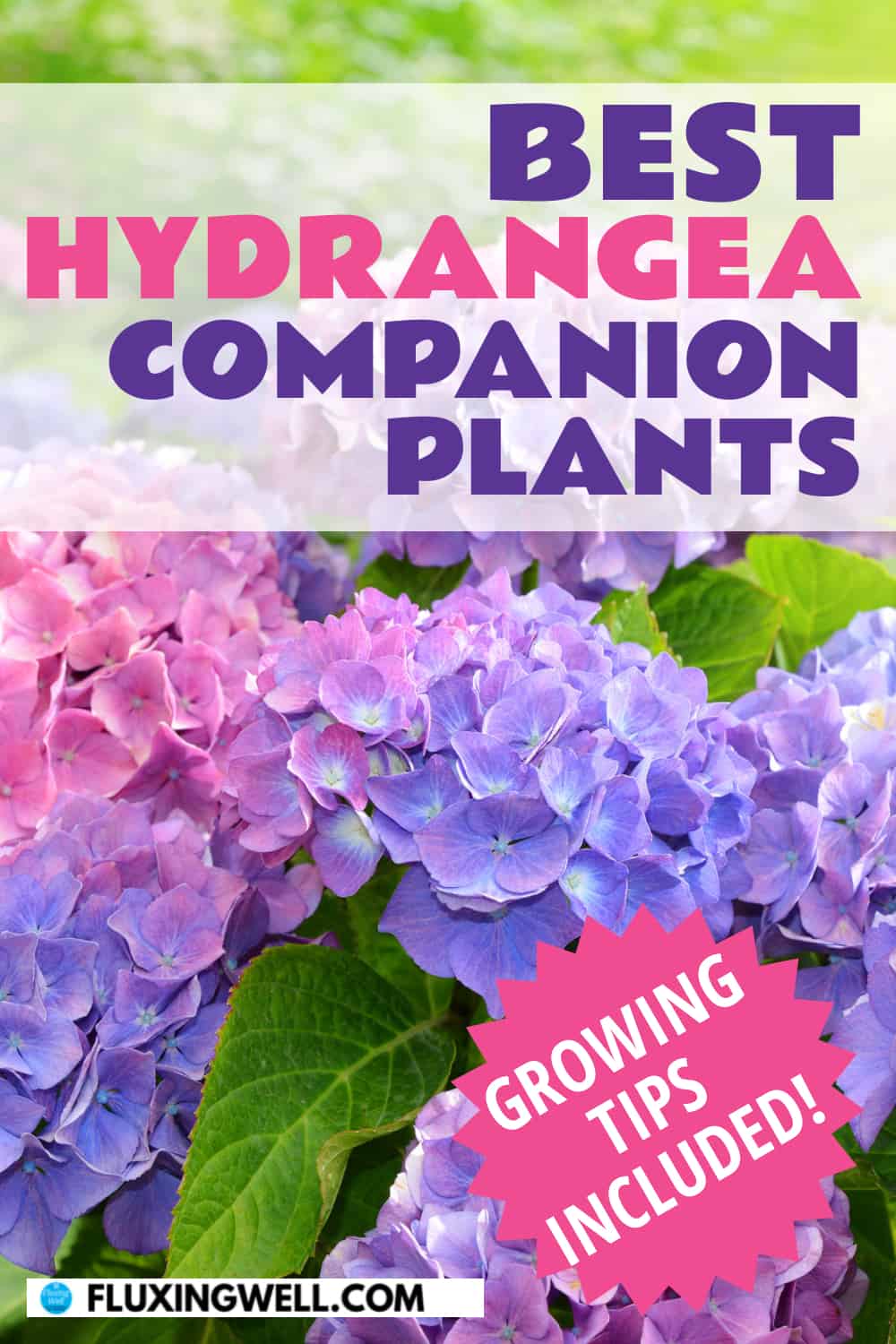
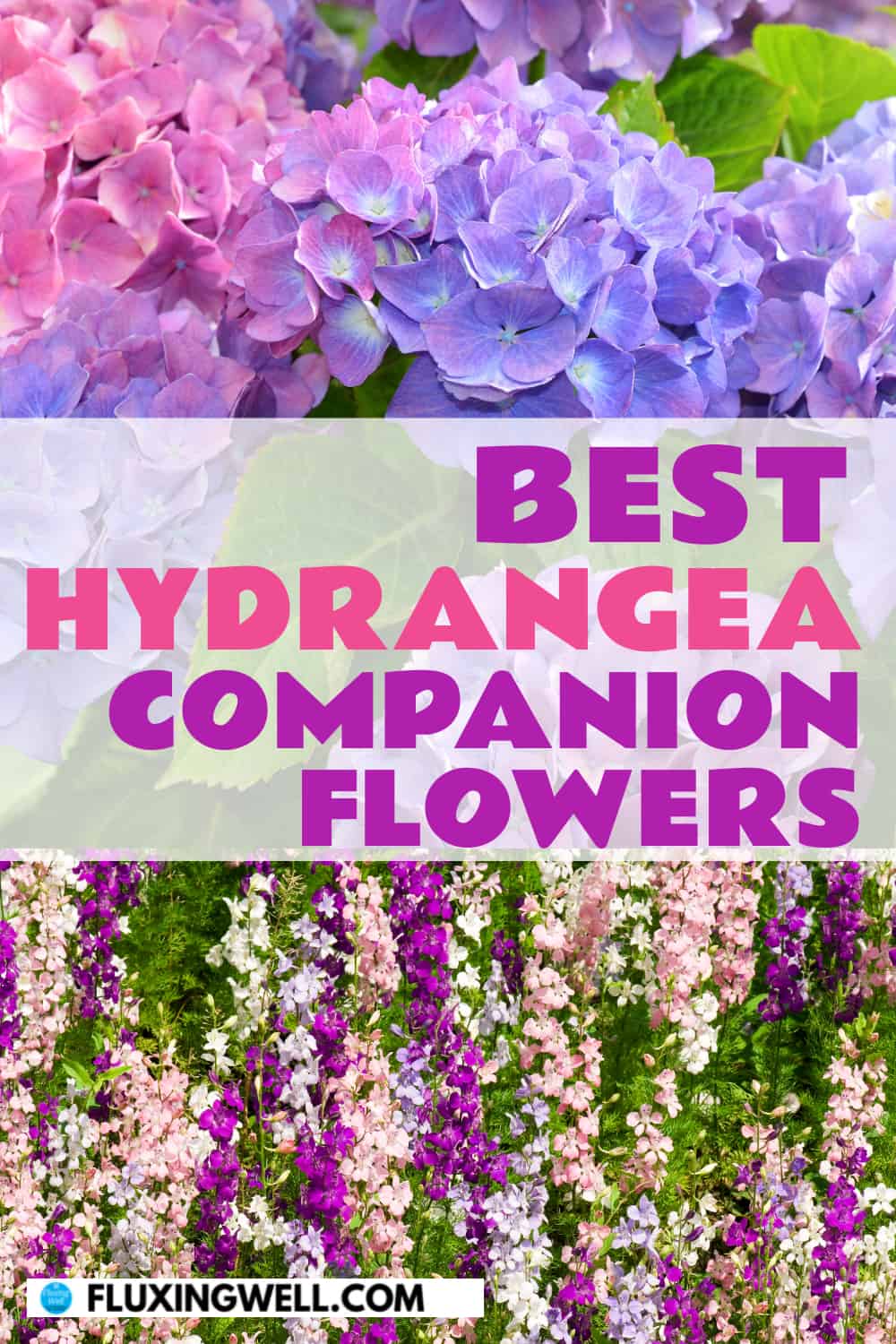



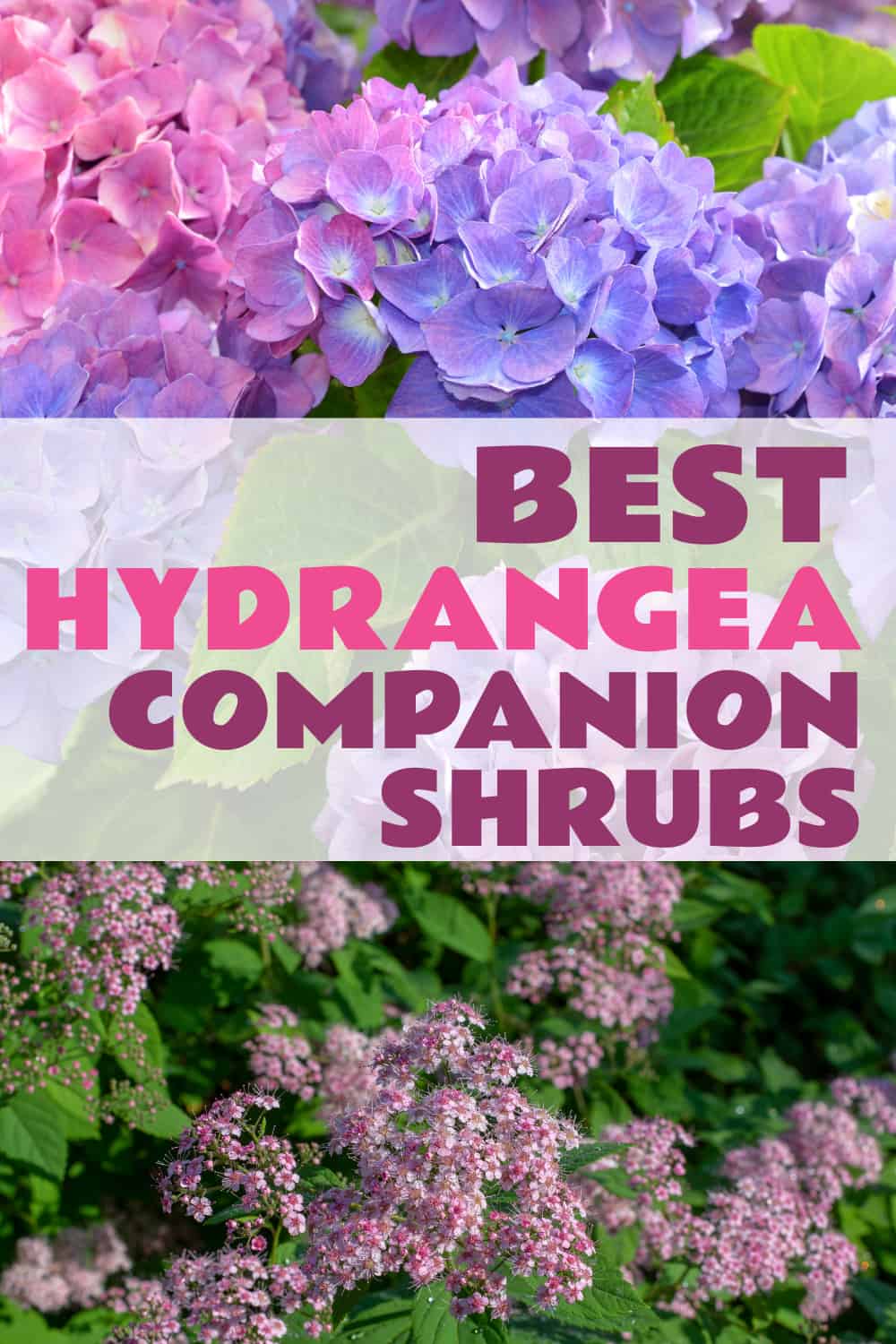

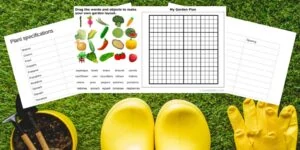


Thanks for this very helpful post about the best hydrangea companion plants and which to avoid! So much useful information here.
Thank you! I hope you get to plant some hydrangeas sometime.
I absolutely love the beauty of hydrangea plants. I’ve been wanting to add some new plants to the side of my house and excited to find the best hydrangea companion plants to work. I’ll be planting some hydrangeas this fall!
Great! I am glad you found this helpful. Have fun planting your hydrangeas!